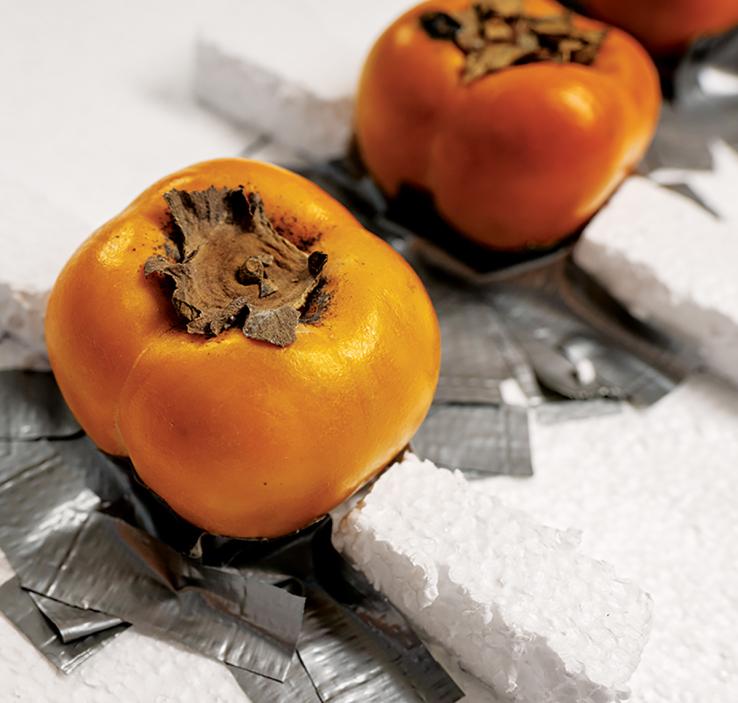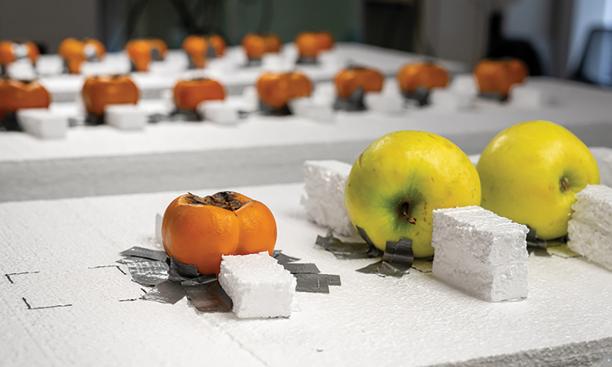
According to the United Nations, nearly half the fruits and vegetables harvested worldwide each year are wasted somewhere on their journey from farm to consumer. A major hurdle in lowering this number is determining at a large scale when produce is or will become ripe, so that only perfectly ripe foods end up on grocery store shelves. Quality control processes used at distribution centers and retailers can be random and inaccurate, leading good produce to be discarded with the bad. But scrutinizing fruits and vegetables individually would require too much time and labor.
“The food waste problem is huge,” says Yasaman Ghasempour, assistant professor of electrical and computer engineering at Princeton. “Billions of dollars go to waste, and the amount of carbon emissions that went into producing those foods is insanely large.”

Ghasempour specializes in developing communication and sensing systems that use untapped wireless frequencies. In the summer of 2022, she invited into her research group a graduate student who had begun considering applications of wireless technology to food waste as a Microsoft intern. In partnership with the student, Sayed Saad Afzal, and Microsoft Research, Ghasempour’s team developed a system that captures ripeness information from inside fruit using wireless signals that penetrate fruit peels without physically touching or damaging the fruit. Named AgriTera, the technology aims to “reduce the waste, and then, in parallel, try to optimize the agriculture sector,” she says.
Ripening occurs when chemical reactions inside the fruit lead to a gradual loss of water and increase in sugar. Though the peel’s color and texture may also change predictably as a fruit ripens, they’re not reliable indicators for the precise inner contents of the fruit. Ghasempour found that sub-terahertz electromagnetic waves, a type of wireless signal, could be used to accurately measure a fruit’s water and sugar content. These invisible waves are highly sensitive to water and sugar concentration and are similar to those that carry Wi-Fi and 5G but have slightly higher frequencies. Because current technology hardly uses these frequencies, there is greater range, or bandwidth, available for AgriTera to use. This wider bandwidth allows AgriTera to capture a wealth of information at high speeds.

In AgriTera, sub-terahertz waves are transmitted into the fruit and bounce off the inner pulp. Different frequencies are absorbed to varying degrees based on the water and sugar concentration, and a receiver measures the power of the reflected signals, which are used to determine ripeness. They used avocados, green apples, and persimmons in the experiment.
Ghasempour and her group are currently researching how to upgrade AgriTera so that large quantities of fruit, like those that stream down conveyer belts at large distribution centers, can be analyzed simultaneously. They’re also thinking about how to give consumers access to the technology. Experts predict that sometime around the start of the next decade, the 5G networks many smartphones currently use will be replaced by 6G, which will incorporate sub-terahertz waves. Using AgriTera could be as easy as snapping a picture of a fruit in the produce aisle.
“You click a button, it sends a wireless signal, and there’s an app interface that tells you, ‘This is the amount of dry matter in the fruit,’” Ghasempour says of the idea. She notes that this mobile version could benefit people with diabetes and other dietary restrictions by allowing consumers to see the exact sugar content of produce and decide in real time what best meets their needs.
Her study, which won Best Paper at the 2023 International Conference on Mobile Computing and Networking, generated excitement across the world of agriculture. One exciting application for the technology is in the wine industry, where precise data on the ripeness of grapes, and the sugar content of the wines they become, could be used to consistently maintain taste and quality. Ghasempour is optimistic that AgriTera and its ability to reduce food waste worldwide are ripe with potential.
“There is a need for a technology like this,” she says, “and our study can definitely be expanded.”
